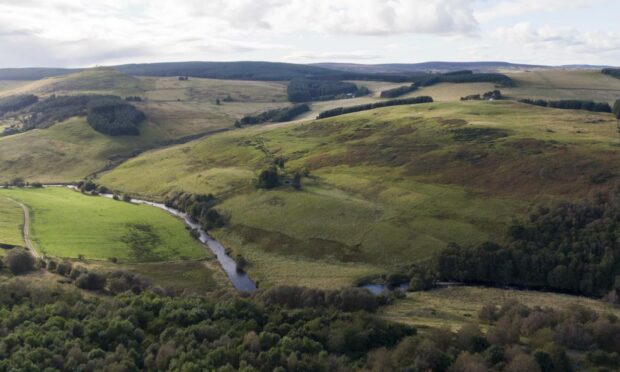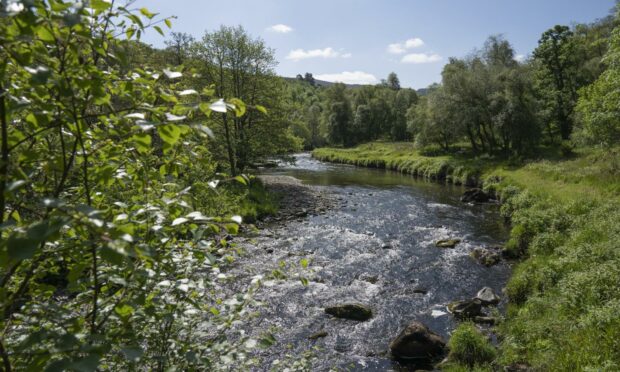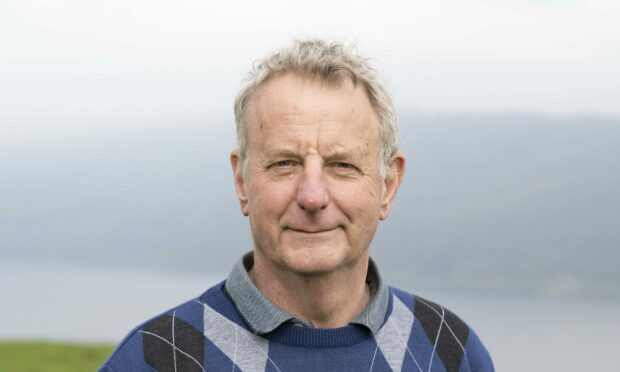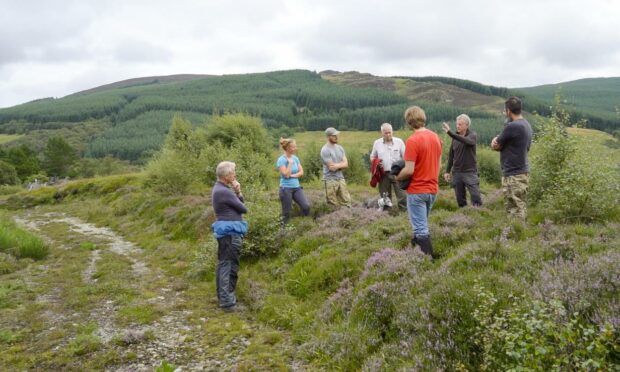Thousands of trees are to be planted to create a new woodland stretching across the border between Aberdeenshire and Moray as a legacy of COP26.
The aim is to create a ‘Forest of Hope’ which will be a model for fighting the climate and biodiversity crises.
The project is a collaboration led by nature recovery company Highlands Rewilding and rural regeneration charity the Cabrach Trust.
Conservation organisations Trees for Life and The Woodland Trust have backed the move and offered expertise and native saplings to plant.
Whose idea is this?
The Forest of Hope is the idea of Climate Action, the company organising the Climate Action Innovation Zone and The Sustainable Innovation Forum at COP26.
It has already attracted interest from neighbouring landowners.
In September Highlands Rewilding launched a crowdfunding scheme to allow people to buy into rewilding projects in the area.
It emerged from the Bunloit Rewilding Project near Loch Ness and the Beldorney Estate in Aberdeenshire to increase carbon sequestration and biodiversity.
The 1,262-acre Bunloit Estate was bought last year by Dr Jeremy Leggett, founder of the solar energy company Solarcentury and former scientific director at Greenpeace.
This year he added the 860-acre Beldorney Estate in Aberdeenshire and the two sites are working together on rewilding initiatives.
As part of the Forest of Hope plan it is envisaged a quarter of a million mixed-species native broadleaf trees will be planted on Beldorney land alone.
Dr Leggett said: “Our definition of rewilding is people-centric in large part because we cannot hope to stop climate meltdown and biodiversity collapse without the full fighting involvement of communities.
A bold, disruptive approach is needed
“Hence the mass-ownership model we are intent on for Highlands Rewilding and therefore the Beldorney part of the first Forest of Hope.
“You can well imagine how thrilled we are that neighbours and expert organisations have so quickly lined up to collaborate, and we hope there will be much more to come.”
Jonathan Christie, chief executive of The Cabrach Trust, said it is excited about the ambition and purpose of the Forest of Hope.
“If we are to avert the climate emergency, a bold, disruptive approach is required.
“And, without any doubt, we all have the capacity to be part of the change we need to see.
“The Cabrach Trust is based at Inverharroch Farm, some four miles upstream from Beldorney, and we are thrilled to form an extension of the Forest of Hope at Inverharroch, strengthening vital riparian habitats in the Upper Deveron Valley.
“As a result, our brand-new community wellbeing trails will be complimented by a significant programme of planting encompassing thousands of native, broadleaf trees.
“A critical development, central to the broader evolution of farming and other activities in the Cabrach and a vital example of how rural communities can contribute to a Just Transition.”
Trees for Life will provide tens of thousands of native tree saplings for the woodland.
Woodland habitat will bring back wildlife
Alan McDonnell, the charity’s programme development manager, said: “The rich woodland habitat these trees create will help bring back wildlife and restore ecosystems, while sequestering thousands of tonnes of carbon at the same time.
“Climate and nature depend on one another.
“If we can help nature recover through a combination of tree planting and natural regeneration, we also create hope for the planet’s future.”
Woodland Trust Scotland outreach manager Iain Moss said while trees soak up carbon, planting along riverbanks also shades rivers, keeping them cool as temperatures rise.
“So these woods should help protect the Deveron, its fish and insects for years to come.”
Nick Henry, Founder and CEO at Climate Action, said he is delighted the idea to create the COP26 Forest of Hope is becoming a reality.
“I believe that nature is the most important partner to work with in tackling the climate emergency.
“That’s why it is our mission to support nature-based solutions such as rewilding, both in the UK and internationally.
“From the greening of gardens, parks and cities right through to the large-scale rewilding of landscapes, a growing number of people, businesses and institutions are now realising that ecosystem restoration and regeneration is vital to the long-term health of our planet.”
Restoring native woodland
The Bunloit Estate is also part of an ambitious plan to return an area of the Highlands covering more than 500,000 acres back to nature.
The 30-year Affric Highlands project would connect a swathe of landholdings from Loch Ness to Kintail.
It aims to restore native woodland and peatland and improve wildlife habitats, while providing economic and community benefits.
It involves 20 landowners, including the Trees for Life 10,000-acre Dundreggan Estate at Invermoriston which is building the world’s first rewilding centre.



